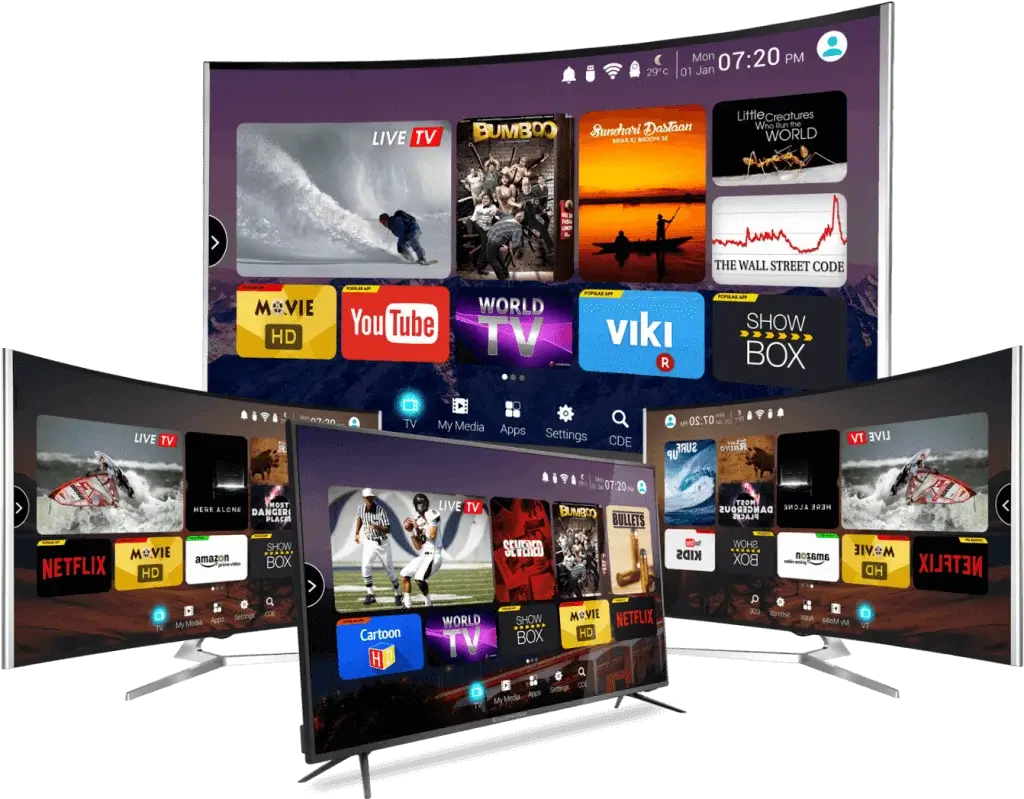Internet Protocol Television (IPTV) has emerged as a disruptive technology in the realm of television broadcasting, offering viewers unprecedented flexibility and access to a vast array of content. This comprehensive guide will delve deeper into the intricacies of IPTV, covering its origins, technical workings, market landscape, regulatory challenges, and future prospects.

- Origins of IPTV:
The concept of IPTV traces back to the early 1990s when advancements in internet technology made it feasible to transmit audio and video content over IP networks. Initially, IPTV services were experimental and limited in scope. However, with the proliferation of broadband internet and advancements in video compression techniques, IPTV gained momentum in the early 2000s.
- Technical Working of IPTV:
IPTV operates on the principle of delivering television content over IP networks, primarily the internet. The process involves encoding video and audio signals into IP packets, which are then transmitted to users’ devices via broadband connections. These packets are decoded by IPTV-compatible devices such as set-top boxes, smart TVs, or streaming media players, allowing viewers to watch live TV channels, on-demand videos, and interactive content.
- Market Landscape:
The IPTV market has witnessed exponential growth in recent years, driven by the increasing adoption of high-speed internet and the proliferation of smart devices. Key players in the IPTV ecosystem include telecommunications companies, content providers, equipment manufacturers, and software developers. Major IPTV service providers offer a diverse range of subscription packages, catering to various consumer preferences and demographics.
- Regulatory Challenges:
The regulatory landscape surrounding IPTV is complex and varies from region to region. In some jurisdictions, IPTV services are subject to stringent licensing requirements and content regulations imposed by regulatory authorities. Additionally, copyright infringement and piracy pose significant challenges for IPTV providers, necessitating robust content protection measures and anti-piracy strategies.
- Advantages of IPTV:
- Flexibility: IPTV allows viewers to watch TV content anytime, anywhere, on any internet-enabled device.
- Customization: Users can personalize their viewing experience by choosing from a wide selection of channels and on-demand content.
- High-Quality Video: IPTV delivers high-definition (HD) and even ultra-high-definition (UHD) video quality, provided they have a stable internet connection.
- Interactive Features: IPTV services offer interactive features such as video-on-demand (VOD), time-shifted TV, and interactive advertising, enhancing the overall viewing experience.
- Disadvantages of IPTV:
- Dependence on Internet Connectivity: IPTV performance is heavily reliant on the quality and stability of the user’s internet connection. Poor connectivity can lead to buffering and degraded video quality.
- Content Restrictions: Geographical restrictions and content licensing agreements may limit access to certain channels and programs based on the user’s location.
- Security Concerns: IPTV systems are susceptible to security vulnerabilities, including hacking, malware attacks, and unauthorized access to content.
- Popular IPTV Services:
- Netflix: Offers a vast library of movies, TV shows, documentaries, and original content, available on multiple devices.
- Hulu + Live TV: Provides live TV channels along with on-demand content, with options for ad-supported and ad-free subscriptions.
- Amazon Prime Video: Features a diverse selection of movies, TV shows, and original content, including live sports and exclusive programming.
- Disney+: Showcases content from Disney, Pixar, Marvel, Star Wars, and National Geographic, appealing to audiences of all ages.
- Sling TV: Delivers live TV channels with customizable channel packages, catering to diverse viewing preferences.
- Future Trends in IPTV:
- 5G Integration: The rollout of 5G networks will enable faster speeds and lower latency, facilitating seamless streaming experiences on IPTV platforms.
- AI-driven Personalization: Artificial intelligence (AI) algorithms will analyze user preferences and viewing habits to deliver personalized recommendations and content suggestions.
- Augmented Reality (AR) and Virtual Reality (VR): IPTV services may incorporate AR and VR technologies to offer immersive viewing experiences, blurring the lines between traditional television and interactive media.
- Convergence with OTT Services: IPTV providers may integrate with over-the-top (OTT) streaming platforms, enabling users to access a broader range of content through a single subscription.
In conclusion, IPTV represents a paradigm shift in the way television content is delivered and consumed, offering viewers unparalleled convenience, choice, and interactivity. As the technology continues to evolve and mature, IPTV is poised to reshape the future of entertainment, transcending traditional boundaries and ushering in a new era of digital broadcasting.
